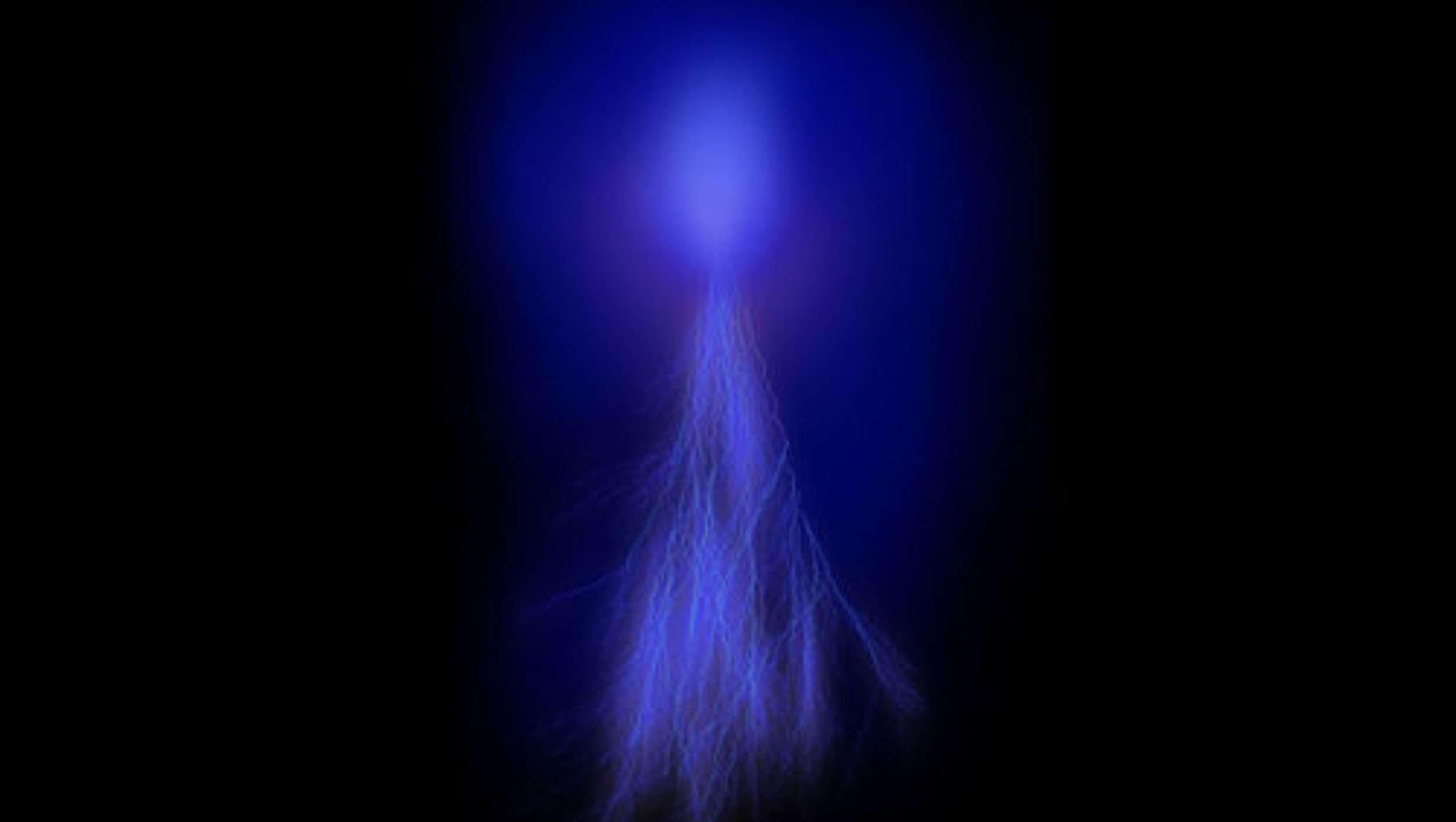Create a free profile to get unlimited access to exclusive videos, sweepstakes, and more!
ISS Astronaut Captures Image of Rare Thunder Sprite from Space
The logistics for this photoshoot were wild.

It’s easy to forget that our planet is alive. Layers of solid rock and liquid magma roiling around a spinning metal core, tidal forces between the Earth and the Moon, and electromagnetic interactions with the Sun are just a few of the ways in which our planet acts on and reacts to the environment. Sometimes those processes generate natural disasters of the type found in Geo-Disaster (streaming now on Peacock), and sometimes they create weird little bursts of red light that haunt orbiting astronauts.
ESA astronaut Andreas Mogensen is currently aboard the International Space Station, serving as commander of ISS Expedition 70 and carrying out duties for the European Huginn mission. Those duties include, among other things, hunting for rare atmospheric phenomena known as red sprites. Recently, Mogensen succeeded in capturing a photograph of one of these fleeting flashes using specialized camera equipment.
Capturing Red Sprite Lightning With the International Space Station's Weird Davis Camera
As part of the Thor-Davis experiment, every Saturday, Andreas went to the station’s Cupola — a dome of windows providing a view to the outside, including the planet below — to take some photos. He was using the station’s camera with a specially built Davis camera attached. Unlike conventional cameras which utilize a shutter to expose a light sensor, a Davis camera (short for Dynamic and Active-pixel Vision Sensor) passively senses light all the time. Each pixel operates independently and triggers an event if the observed brightness peaks above a specified background rate.
RELATED: International Space Station Destined for Point Nemo, the World's Spaceship Graveyard
That makes Davis cameras really good at snapping certain types of images and bad at others. Remember when Dr. Alan Grant told the kids in Jurassic Park that Rexy couldn’t see them if they didn’t move? He was wrong about that, but it is a pretty good explanation of how Davis cameras work. A totally still scene would be invisible to the camera because there is no change in light to measure. It would be really bad at taking portraits, but it’s great for capturing lightning.
Andreas was hunting each Saturday for thunderclouds and the rare red sprite lightning which sometimes follows them. Red sprites are sometimes called Transient Luminous Events (TLE) and are electrical discharges generated above rainclouds at an altitude between 40 and 80 kilometers. They exist for only a fraction of a second, but the Davis camera aboard the ISS is capable of snapping roughly 100,000 images per second. Those images, generated a pixel at a time as the red sprite briefly flashed, play out like a video but can be mashed together into a still image.
Researchers estimate that the sprite Andreas captured stretched 14 by 26 kilometers across the sky and, in addition to being cool, is adding to our understanding of atmospheric and environmental dynamics. Those are important to understand if you want to launch rockets or if you want to keep existing and thriving on the Earth.
If the folks in Geo-Disaster paid a little more attention to their planet, maybe they wouldn’t have gotten tag teamed by every natural disaster we have a name for. Catch Geo-Disaster streaming now on Peacock.


























